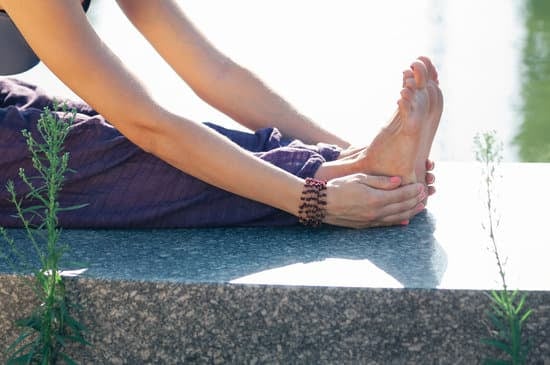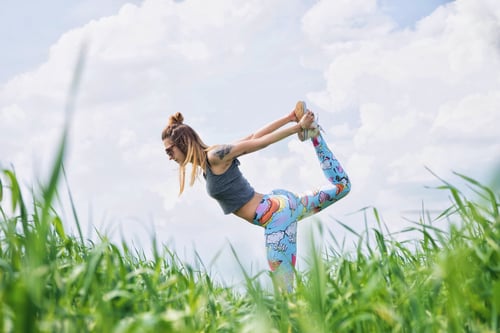
Your feet are the foundation of your body, carrying you through every step of your day. However, with the constant stress and pressure they endure, it's no surprise that foot problems are incredibly common.
In fact, a staggering 77 percent of people in the United States experience some form of foot issue, according to a survey by the American Podiatric Medical Association, with half saying it impacted their quality of life.
The good news is that you have the power to alleviate and even prevent many foot problems through a simple yet effective practice: foot stretching.
By dedicating just a few minutes each day to stretching your feet, you can improve flexibility, reduce pain, and enhance your overall foot health.
Whether you're an athlete, a busy professional, or simply someone looking to maintain healthy, pain-free feet, foot stretching is a valuable tool to have in your self-care arsenal.
In this blog post, we'll dive deep into the world of foot stretching, exploring:
- The intricate anatomy of the foot and how it contributes to common foot problems.
- The numerous benefits of foot stretching for your feet, ankles, and overall well-being.
- A step-by-step guide to effective foot stretches you can incorporate into your daily routine.
- Tips for making the most of your foot stretching practice and when to seek professional help.
By the end of this article, you'll have a comprehensive understanding of how foot stretching can transform the health and comfort of your feet, empowering you to put your best foot forward in all aspects of your life.
Understanding the Complexity of Feet
We may not give our feet much thought, but they are incredibly complex structures.
“The foot is a complex mechanical structure of the human body composed of 33 joints, 26 bones, and more than a hundred muscles, tendons, and ligaments that all work together to bear weight, allow for locomotion, and transmit force. The joints of the foot are made wherever two or more of the foot bones meet,” explains a National Center for Biotechnology Information article.
All these structures work in unison to balance, support, and move your body. Foot problems can develop in one or more of these structures, causing pain, poor balance, and mobility issues.
Our foot muscles are important to our mobility as humans.
“Human feet have evolved uniquely among primates, losing an opposable first digit in favor of a pronounced arch to enhance our ability to walk and run with an upright posture. Recent work suggests that muscles within our feet are key to how the foot functions during bipedal walking and running,” explains a Proceedings of National Sciences article.
Common Foot Problems
A number of foot problems can cause pain and stiffness from your toes to your heels:
- Plantar fasciitis: One of the most common foot problems, plantar fasciitis develops as the result of inflammation of the plantar fascia, the fibrous tissue that runs along the bottom of your foot, connecting your toes to your heel bone.
- Lifestyle choices: Wearing high heels or uncomfortable shoes can cause painful foot problems. Standing all day can cause discomfort, fatigue, and even swelling in your feet and lower legs.
- Bunions: A bony bump that forms at the base of the big toe, causing the big toe to angle toward the second toe. Bunions can cause pain, stiffness, and difficulty wearing shoes.
- Hammertoes: A deformity in which the toe bends abnormally at the middle joint, causing pain, pressure, and calluses.
- Heel spurs: Bony growths that develop on the underside of the heel bone, often associated with plantar fasciitis. Heel spurs can cause pain and tenderness in the heel area.
- Achilles tendonitis: Inflammation of the Achilles tendon, which connects the calf muscle to the heel bone. Achilles tendonitis can cause pain, stiffness, and swelling in the back of the heel and ankle.
- Metatarsalgia: Pain and inflammation in the ball of the foot, often caused by overuse, ill-fitting shoes, or certain foot shapes.
- Morton's neuroma: A thickening of the tissue surrounding a nerve in the ball of the foot, typically between the third and fourth toes. Morton's neuroma can cause pain, burning, and numbness in the affected area.
- Arthritis: Various forms of arthritis, such as osteoarthritis and rheumatoid arthritis, can cause pain, stiffness, and swelling in the joints of the feet and ankles.
Inflammation and swelling can cause pain, and in some cases can prevent you from going to work, taking care of your family, or engaging in your favorite sport or hobby.
Foot stretches can help stimulate circulation to reduce discomfort and inflammation in your feet.
The Impact of Stiffness on Foot Health
Stiffness in the muscles, joints, or connective tissue can reduce flexibility in your feet, making you more prone to injury.
Foot pain and stiffness can also affect your balance, increasing your risk for falls.
Foot stretching can loosen tight tissue to alleviate stiffness and improve balance.
The Many Benefits of Foot Stretching
Foot stretching provides many benefits to your feet, toes, and ankles:
- Stretches the more than 100 muscles, tendons, and ligaments in each of your feet, decreasing stiffness.
- Improves the range of motion of your feet, allowing each joint to move fully and smoothly.
- Feels great and soothes aching feet almost immediately.
- Can help prevent some types of foot problems.
Most foot stretches are simple and do not require the use of complicated equipment. You can do foot stretches at home or at the gym as part of your regular exercise routine.
Effective Foot Stretches
Foot care specialists have developed a number of foot stretches that reduce discomfort and improve function:
Toe Raise, Point, and Curl
- Sit in a comfortable position with your feet flat on the floor.
- Raise your toes off the ground, keeping your heel in contact with the floor.
- Point your toes forward, then curl them under, creating a gentle stretch in the arch of your foot.
- Hold each position for 5-10 seconds, then release.
- Repeat 10-15 times on each foot.
Tip: Focus on isolating the movement to your toes and the arch of your foot, keeping the rest of your leg relaxed.
Big Toe Stretch
- Sit in a comfortable position with your feet flat on the floor.
- Cross your right leg over your left, resting your right ankle on your left thigh.
- Using your right hand, gently grasp your right big toe and pull it toward you, feeling a stretch along the bottom of your foot and in your big toe joint.
- Hold the stretch for 15-30 seconds, then release.
- Repeat 3-5 times on each foot.
Tip: Be gentle when pulling your big toe to avoid overstraining the joint or causing discomfort.
Toe Flexion and Extension
- Sit in a comfortable position with your feet flat on the floor.
- Lift your right foot slightly off the ground, keeping your heel in place.
- Slowly flex your toes forward, then extend them back, moving through their full range of motion.
- Repeat 10-15 times on each foot.
Tip: Perform this exercise slowly and deliberately, focusing on the movement of each toe.
Ankle Circles
- Sit in a comfortable position with your right leg crossed over your left, and your right ankle resting on your left thigh.
- Slowly circle your right foot clockwise, moving through its full range of motion.
- Perform 10-15 circles clockwise, then switch directions and perform 10-15 circles counterclockwise.
- Repeat on the left foot.
Tip: Keep your leg stationary during this exercise, allowing the movement to originate from your ankle joint.
Calf Stretches
- Stand facing a wall, placing your hands on the wall at shoulder height for support.
- Step your right foot back, keeping your leg straight and your heel on the ground.
- Bend your left knee, keeping your right leg straight, until you feel a stretch in your right calf muscle.
- Hold the stretch for 15-30 seconds, then release.
- Repeat 3-5 times on each leg.
Tip: Keep your back leg straight and your heel on the ground throughout the stretch to target your calf muscle effectively.
Remember to perform these stretches gently and stop if you experience any pain or discomfort.
It's best to incorporate foot stretches into your daily routine, such as after waking up or before going to bed, to maintain flexibility and prevent foot problems.
As with any new exercise routine, it's advisable to consult with a foot care specialist or your healthcare provider to ensure that these stretches are appropriate for your individual needs.
When to Seek Professional Help
While foot stretching can be highly beneficial, some foot problems may require professional attention.
If you experience persistent foot pain, swelling, or difficulty walking, it's essential to consult a foot care specialist. They can provide a proper diagnosis and recommend the most appropriate treatment plan for your specific condition.
To learn more about foot stretches and whether they can help you reduce foot pain and dysfunction, contact Sweeney Foot & Ankle Specialists. Our experienced team is dedicated to helping you maintain optimal foot health and achieve a pain-free, active lifestyle.






